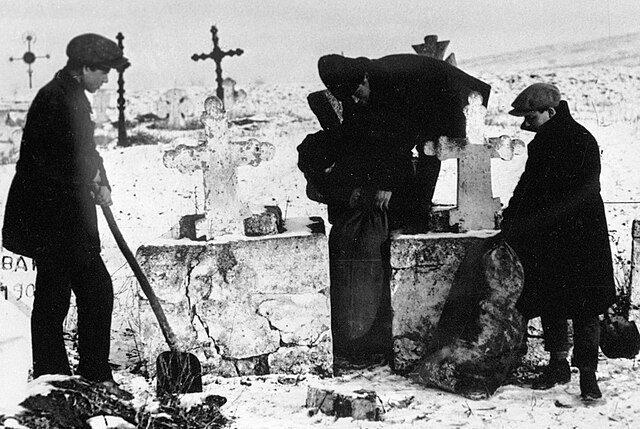The Khrushchev Thaw is the period from the mid-1950s to the mid-1960s when repression and censorship in the Soviet Union were relaxed due to Nikita Khrushchev's policies of de-Stalinization and peaceful coexistence with other nations. The term was coined after Ilya Ehrenburg's 1954 novel The Thaw ("Оттепель"), sensational for its time.
Khrushchev and Stalin, 1936, Kremlin
O kulcie jednostki i jego następstwach, Polish March 1956 print of the Secret Speech for the inner use in the PUWP.
Enver Mamedov (right), the editor of The USSR magazine, presents it to the CBS audience (1957)
Khrushchev meeting U.S. president John F. Kennedy in 1961
Political repression in the Soviet Union
Throughout the history of the Soviet Union, tens of millions of people suffered political repression, which was an instrument of the state since the October Revolution. It culminated during the Stalin era, then declined, but it continued to exist during the "Khrushchev Thaw", followed by increased persecution of Soviet dissidents during the Brezhnev era, and it did not cease to exist until late in Mikhail Gorbachev's rule when it was ended in keeping with his policies of glasnost and perestroika.
Corpses of hostages executed by Cheka in 1918 in the basement of Tulpanov's house in Kherson, Ukrainian SSR, The Black Book of Communism
Corpses of people executed by Cheka in 1918 at a yard in Kharkiv, Ukrainian SSR, The Black Book of Communism
The contemporary caption says "YCLers seizing grain from kulaks which was hidden in the graveyard, Ukraine, 1930." At the height of collectivization anyone resisting it was declared a "kulak"
People of Vinnytsia searching through the exhumed victims of the Vinnytsia massacre, 1943








